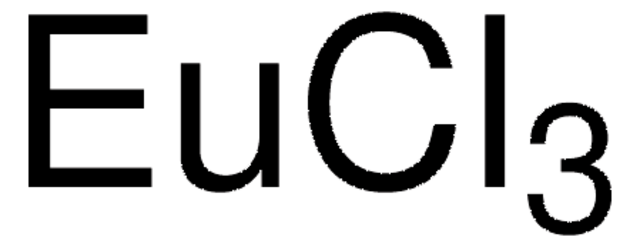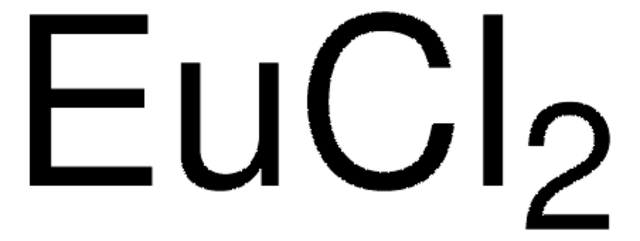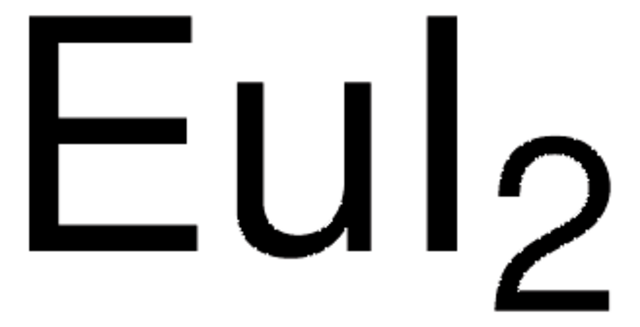Kluczowe dokumenty
429732
Europium(III) chloride
anhydrous, powder, 99.99% trace metals basis
Synonim(y):
Europium trichloride
About This Item
Polecane produkty
klasa czystości
anhydrous
Poziom jakości
Próba
99.99% trace metals basis
Postać
powder
przydatność reakcji
reagent type: catalyst
core: europium
zanieczyszczenia
≤150.0 ppm Trace Rare Earth Analysis
mp
850 °C (lit.)
gęstość
4.89 g/mL at 25 °C (lit.)
ciąg SMILES
Cl[Eu](Cl)Cl
InChI
1S/3ClH.Eu/h3*1H;/q;;;+3/p-3
Klucz InChI
NNMXSTWQJRPBJZ-UHFFFAOYSA-K
Szukasz podobnych produktów? Odwiedź Przewodnik dotyczący porównywania produktów
Zastosowanie
- Photochemical Recovery of Europium from Non-aqueous Solutions: This study explores the photochemical processes involving Europium(III) chloride, which are significant for applications in material recovery and recycling (B Van den Bogaert, L Gheeraert, 2016).
- Electrochemistry of Europium(III) Chloride in Various Eutectics: Investigation of the electrochemical properties of Europium(III) chloride in different molten salt mixtures, important for developing new materials and nuclear applications (CA Schroll, S Chatterjee, TG Levitskaia, 2017).
wyposażenie dodatkowe
Kod klasy składowania
11 - Combustible Solids
Klasa zagrożenia wodnego (WGK)
WGK 2
Temperatura zapłonu (°F)
Not applicable
Temperatura zapłonu (°C)
Not applicable
Środki ochrony indywidualnej
Eyeshields, Gloves, type N95 (US)
Wybierz jedną z najnowszych wersji:
Masz już ten produkt?
Dokumenty związane z niedawno zakupionymi produktami zostały zamieszczone w Bibliotece dokumentów.
Klienci oglądali również te produkty
Produkty
Thermoelectric Performance of Perovskite-type Oxide Materials
The prevailing strategies for heat and electric-power production that rely on fossil and fission fuels are having a negative impact on the environment and on our living conditions.
The rare earth elements impact nearly everyone in the world. All of the people living in advanced technological countries and almost all those living in third world countries utilize the rare earths in their everyday living—the car that one drives (gasoline is refined from oil using rare earth catalysts and catalytic converters reduce the polluting emissions from the automotive exhaust), watching the news on TV (the red and green colors in TV screens), the telephones and computers we use to communicate (the permanent magnets in speakers and disc drives), just to name a few examples.
Nasz zespół naukowców ma doświadczenie we wszystkich obszarach badań, w tym w naukach przyrodniczych, materiałoznawstwie, syntezie chemicznej, chromatografii, analityce i wielu innych dziedzinach.
Skontaktuj się z zespołem ds. pomocy technicznej












